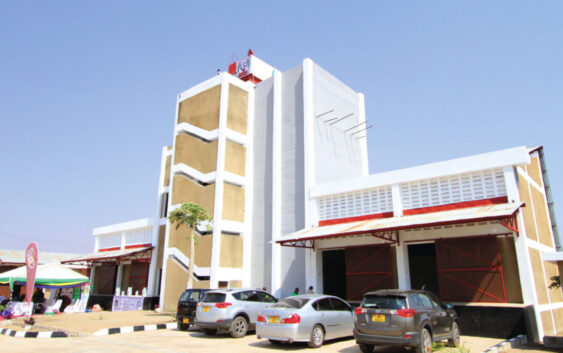RWANDA MINISTER ANNOUNCED REVAMP OF STALLED WHEAT FACTORY

The Ministry of Trade and Industry has announced that it has deployed technicians to work with an investor who took over the Nyamagabe wheat processing factory through an auction, to work on machinery and be able to resume operations.
The factory’s operations stalled for four years leaving farmers without a sustainable market. The previous owners of the factory were saddled with debt from Ecobank which led to halting operations as it had to be auctioned.
The move to revive the factory follows a concern expressed by wheat farmers during the recent President Paul Kagame citizen outreach in the Nyamagabe district, where he ordered authorities to seek a solution for it.
Wheat is one of the top crops grown in the Nyamagabe District. The district is one of the 11 others that grow wheat extensively.
Minister of Trade and Industry, Jean-Chrysostome Ngabitsinze, told The New Times that the technicians who were deployed on the field assessed to know what is needed to revive the processing plant which receives harvest from farmers in Nyamagabe and Nyaruguru districts.
“Rwanda Energy Group (REG) had even cut the power supply because of arrears in paying electricity bills. Now the factory is connected to electricity to run the machines. The technicians are now assessing the status of these machines because they have spent a long time without processing wheat,” he said.
What it will take to upgrade the factory
Janvier Gasasira, an investor who took over the factory through auction, told The New Times that he needs $10 million in financing to revive and upgrade the wheat processing factory.
After buying the factory, it was later found that the machinery was outdated and there was a need for new modern machines.
“We are happy that after the President’s citizen outreach, many institutions intervened to help us so that the factory resumes operations. The machines had technical problems because of spending a long time without working and we had to carry out maintenance and cleaning work for them. We finished these works last week on Friday,” he said.
The investor said that they tested the factory by processing wheat but noted that something is still missing to produce flour that can go to the market.
“We are going to test the machines again and adjust them to the level they used to operate at. This is because when you process wheat, only 20 percent should be by-products but now, by-products are still at 40 percent which can plunge us into losses if we do not adjust the machinery well,” he said.
He said that the process and work to adjust these machines could take between one and three months.
“I have spoken to one cooperative to give us wheat for the second testing. Once these final tests are done, the factory will be operational within three months,” he said.
Meanwhile, Gasasira said that they need finance to be able to buy wheat from farmers to operate at full capacity.
The needed finance, he said, will also help buy modern machinery to upgrade the factory since the existing ones are outdated.
“The machines are outdated. We are negotiating with financial institutions to upgrade the factory. Once upgraded, the production capacity will increase from 15 tonnes per day to 100 tonnes per hour. That is why we need at least $10 million to upgrade the factory and address other related issues,” he said.
Need for quality wheat varieties
Gasasira added that another issue that should be addressed is the lack of wheat varieties that produce enough quality to produce quality bread.
“We need to work with Rwanda Agriculture and Animal Resources Development Board so that we try wheat varieties that are suitable for bread production and the area’s soil. Suitable varieties will be able to also increase production per hectare,” he said.
In Nyamagabe and Nyaruguru, farmers produce 40 tonnes of wheat per season.
Countrywide in 2021 season A, the production was 4,500 tonnes on 4,418 hectares and 9,184 tonnes on 8,749 hectares in Season B.
Yield per hectare was slightly over one tonne in each of seasons- A and B.
Wheat production is still low per hectare depending on different factors including the variety, while there are countries that get 9 to 10 tonnes of wheat per hectare.
“Increasing the factory’s production capacity and wheat yields could help reduce the import bill.“
Data from the Ministry of Trade and Industry show that in 2020, Rwanda spent over $44 million (about Rwf43 billion) on importing more than 177,740 tonnes of wheat, representing an increase of over 10 percent compared to more than $40.8 million (about Rwf39 billion) spent the previous year.
The country’s wheat subsector is constrained by various issues including relatively low farm productivity, higher prices for locally produced wheat compared to imported one, and failure of locally grown produce to meet quality standards required by major agro-processing factories.
The increase in production is needed at a time many countries have stepped in to fill the global wheat supply gap that was created by the Russia-Ukraine war.
Russia and Ukraine have been major players in the global wheat market.

